How to Handle Rough Water
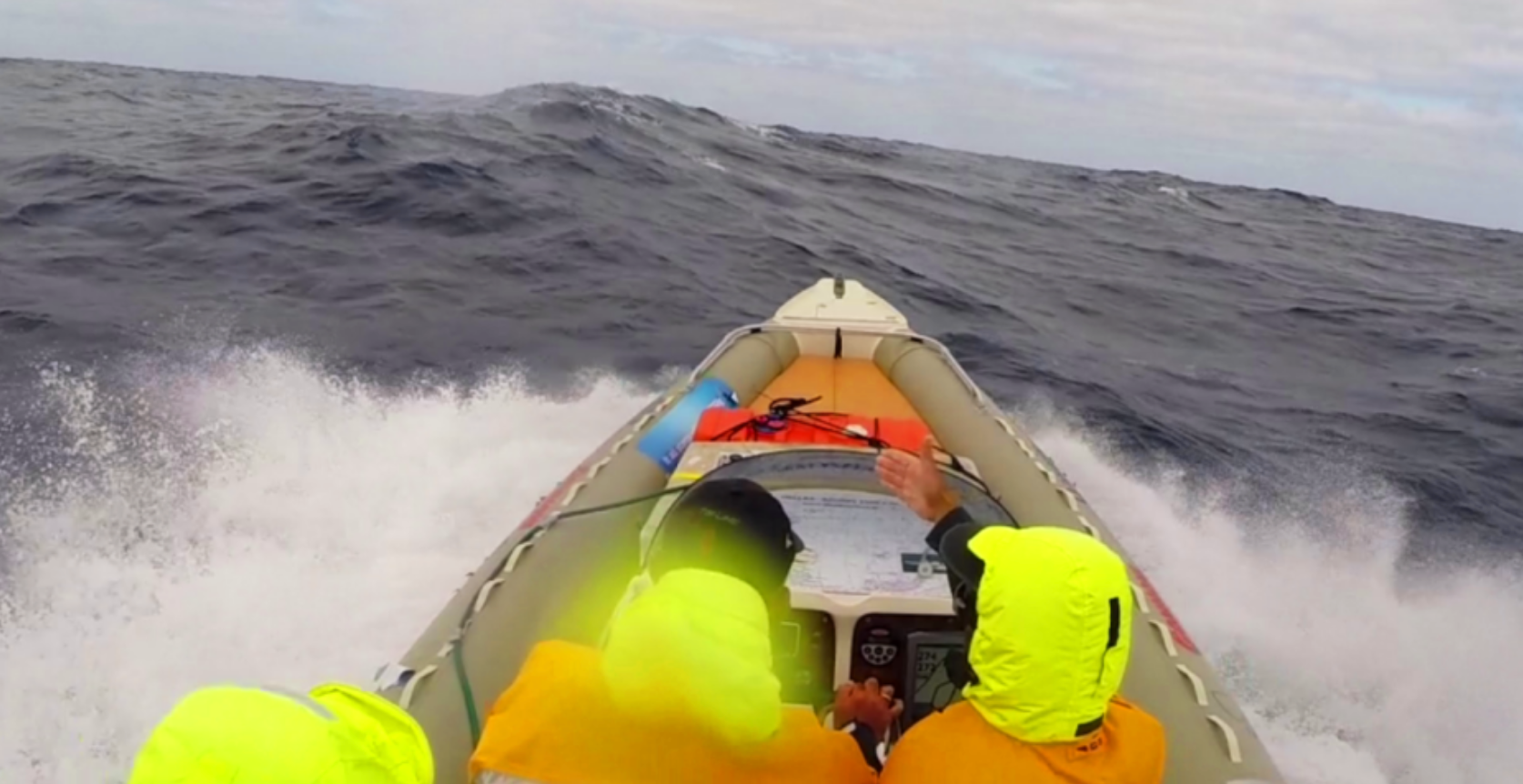
Writing an article on handling a boat in rough water covers many complex topics and it’s almost impossible to give clear, concise answers in such a limited space. In a tough sea, the waves are influenced by many factors. Each wave is different even when running in the same direction so a captain must remain alert and vigilant. That being said, we offer tips for running in rough weather.
The variety of the waves presents one challenge and then we add the type of boat, length and design of the hull and the ability, experience and endurance of the captain. There is also the overall philosophy of driver and crew.
Size Matters
Waves measuring 3’ (1 m) or more will be handled differently than those twice as tall and head-on seas will be tackled differently than those that are forming behind or alongside the boat.
Even on the same waves, we will have different handling if we drive a 20’ (6 m) boat or a 26-footer (8 m). A hull with a conventional deeper V design also takes a different hand than one with steps and the captain’s experience level counts as well.

Let’s take a closer look at the direction in which waves run and give some general tips on how to handle them. A skilled captain should, among other things, combine the appropriate knowledge with observation, awareness and ability.
Navigating Head Seas
When facing the waves, there are two things to identify: the type of waves and their direction. The primary goal is to have the hull properly positioned in relation to the wave direction. In other words, the angle you choose to cruise should be the one that allows the most comfortable journey.
When the waves are perpendicular to our course, we carefully notice their height and length, i.e. the distance between their crests. The most critical factor dictating the way in which the boat needs to be handled is the waves’ length compared to the length of our hull, not the wave height.
If we're facing waves that are shorter than the length of our hull, we shouldn't worry about trying to travel at the maximum comfortable speed at an angle of 90 degrees to the oncoming seas. If our hull is longer than the wave's length, the boat will 'bridge' the crests of two or more waves.
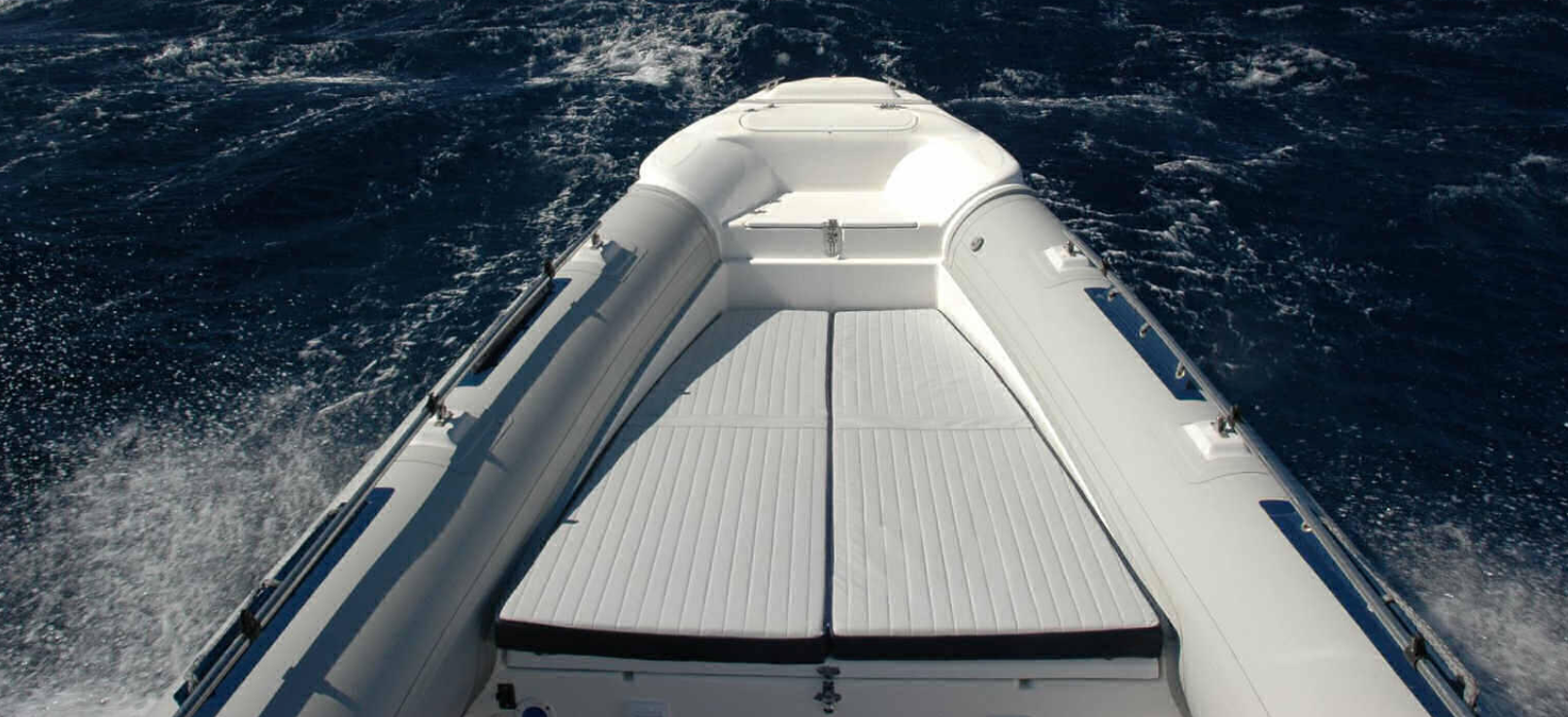
This means our bow will cut across the first wave, then we are in the trough between the waves. We will then alight on the crest of the next wave while our stern remains in contact with the previous wave. The hull maintains contact with the water from bow to stern, so we won't need to engage in any special maneuvers other than small corrections to hold our course.
Because the bottom remains in almost constant contact with the water, we’ll have softer landings when we do take to the air.
When the Waves Get Bigger
As wave height grows, things get more difficult and we need to be more careful. As daring as it may sound, it's preferable to move at a relatively high speed from crest to crest, reducing the trim accordingly and keeping the bow trimmed lower. It will tend to try to pop up after each collision with a large oncoming wave. This requires greater experience and a crew familiar with such conditions. Reaction time is limited and every move of the wheel or throttle is critical.
If we don't feel ready yet to handle the boat in these conditions, we should forget about tackling the waves head on. We turn the hull to a more suitable angle compared to the direction of the waves, and go slow, working the throttle all the time.
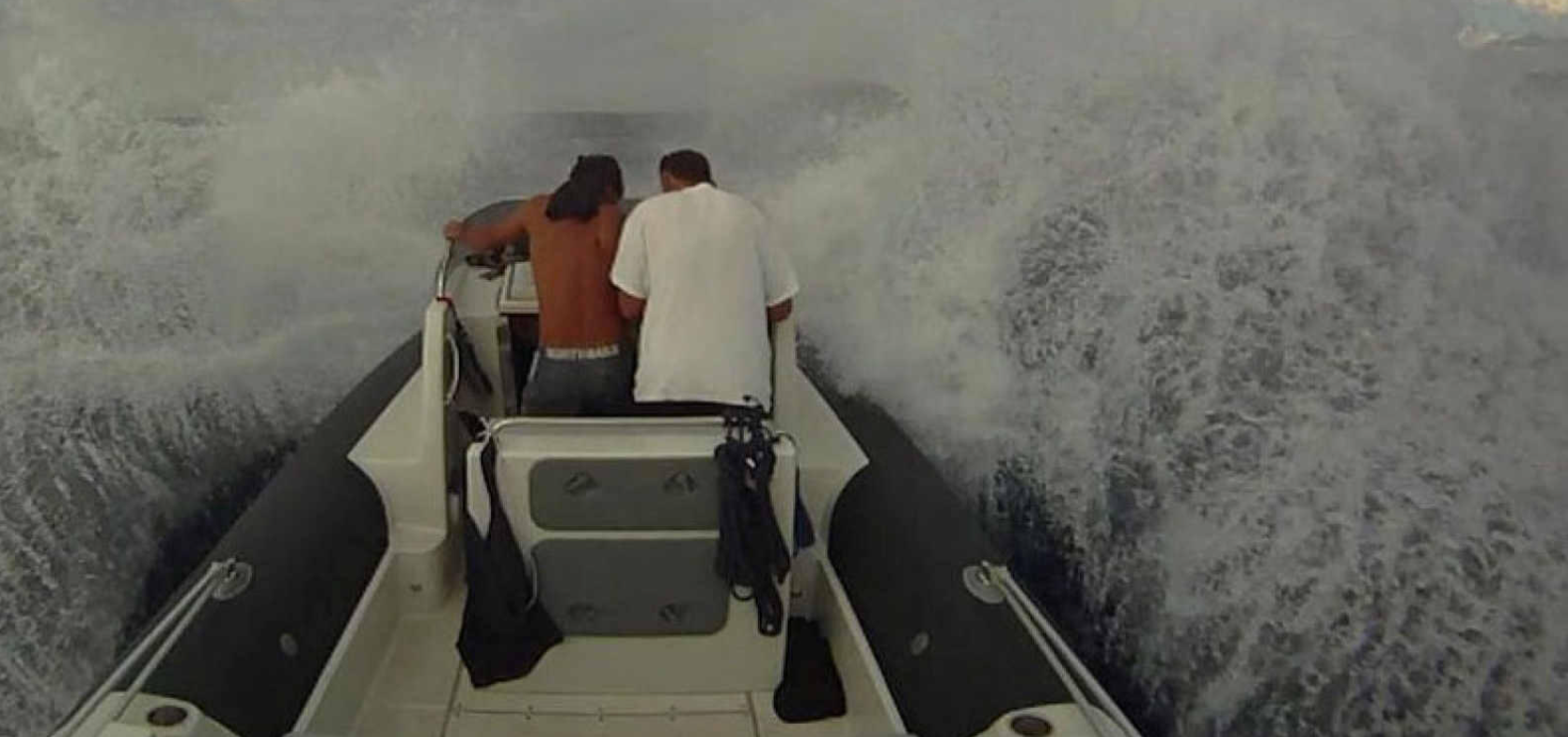
What happens when the weather worsens and waves are more than 6’6” (2 m) tall but wave length remains short? Things become more difficult and it's a good idea — no matter the captain’s experience level — to forget tackling the waves head on because one sudden jolt out of the water could result in losing control of the boat.
We need to change our course. Turn the hull and keep it angled in the same direction as the waves, which is normally less than 40 degrees, but that depends on how bad the weather is, the size of the waves, their length, size of our boat and our own experience and endurance. The smaller the angle, the longer the wave length because the bow now has to cover a greater distance to encounter the crest of the next wave.
In cases where there are tall waves with a wave length longer than our hull, things get easier. Position the on the port or starboard bow because you won't be able to 'bridge' the waves if you sail into them head on. The bow will cross the peak of the large wave at an angle and the gap separating it from the back of the same wave — and not from the trough — will be smaller, varying in size depending on the course angle. The hull will maintain more contact with the water, giving the captain more time to react.
Running in Following Seas
When the waves are heading in the same direction as our course, our trip should be less painful than running into the waves. It's not easy and there are risks involved. It's important to note that when riding against the waves, the hull collides with the wave because of the opposite direction and the bow has the tendency to rise up. When riding with following seas, the wave and hull run in the same direction. The stern is forced up, pressing the bow down and the tendency is for the bow to ram the next wave.
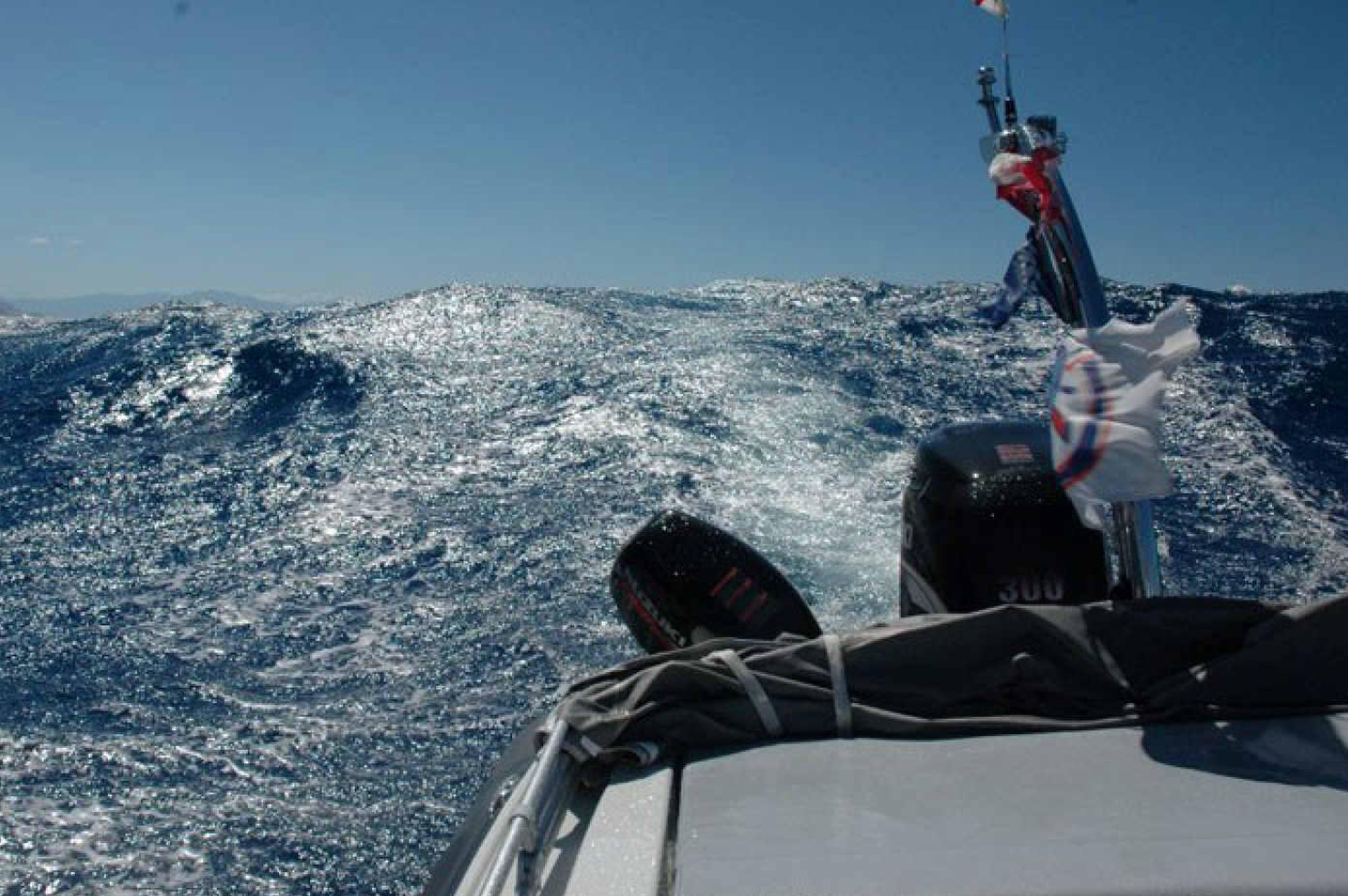
With following seas, the impact of the waves is different, so we need to handle the boat differently. Our first concern must be to keep the bow as high as possible, maintaining high angles of trim and balancing the bow's tendency to drop into the next wave.
Where the waves aren't particularly high and their length doesn't exceed the length of the hull, we can maintain a steady course. We can run at a relatively high speed by skimming from crest to crest if we retain high trim angles to hold the bow high and cross the crests of the waves without problems.
If the wave heights increase but the length is still less than our boat’s length, we can continue on the same course without reducing speed. A quick forward flick of the throttle when the bow is in the air and the boat is getting ready to touch down on the crest of the next wave or just before keeps the boat moving forward instead of letting the bow hang in the air. These brief accelerations help keep the bow as high as possible, letting it cross the crest of the next wave.
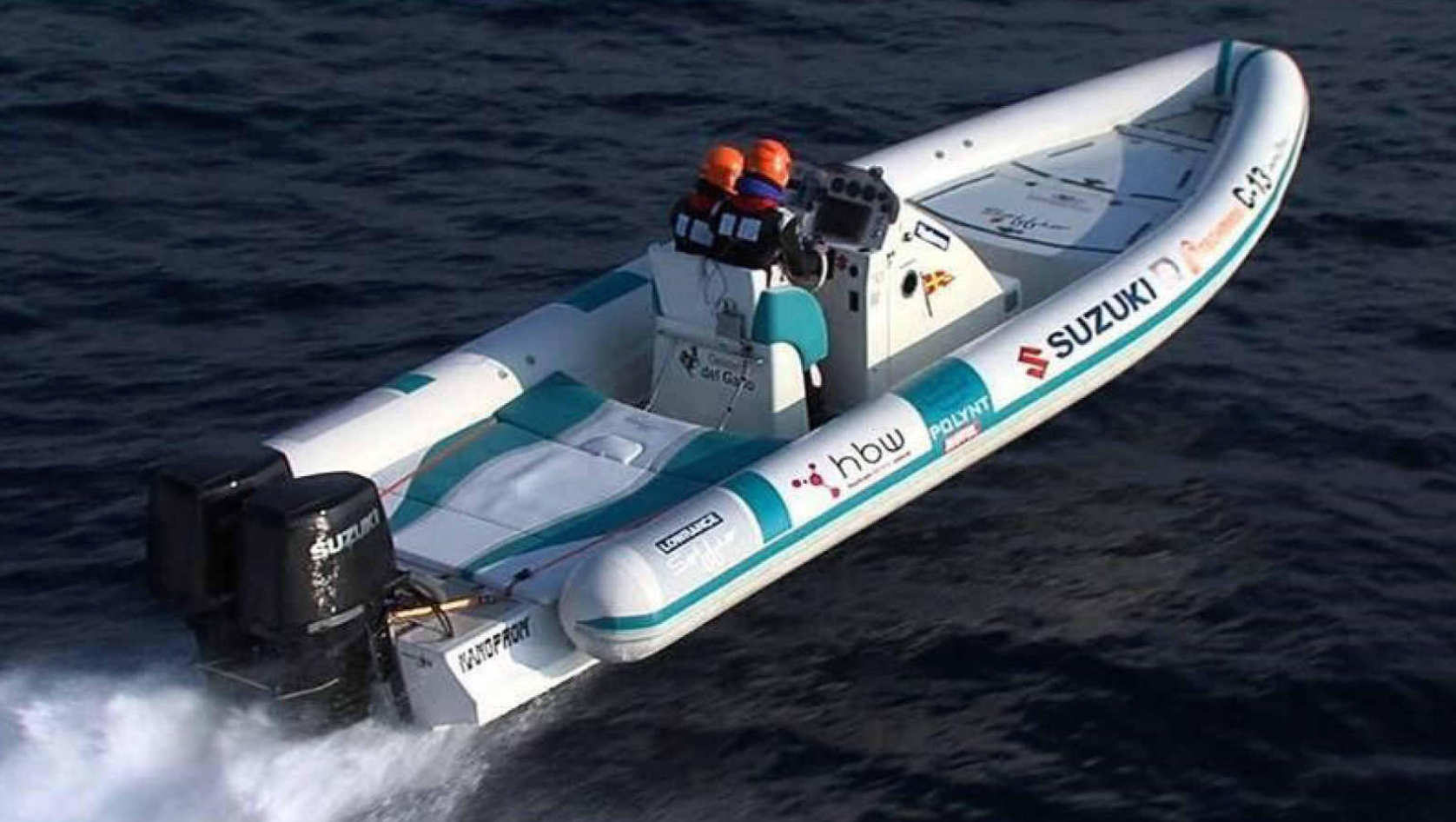
Wave Heights Increase
When the weather worsens and the waves become threatening, we've got two choices: reduce speed to match that of the waves or change direction and place our hull at a suitable angle to the direction of the waves.
In the first case we work the throttle lever constantly, with sudden accelerations to climb the back of the wave, then when we've reached the peak, cut back, travelling with the wave and make quick, small adjustments to stay on top of the peak. Then we ride the next wave and follow the same pattern. Be careful that you don’t leave the crest of the wave and the bow suddenly drops into the trough and gets stuck in the back of the next wave.
In the second case, we change course and the hull is now at an angle to the course of the waves behind us. To use the right terms, the weather is now port quarter or starboard quarter.
This avoids a perpendicular descent on the front side of the wave, with the risk of the bow becoming stuck in the back of the leading wave. This ensures that each wave is port quarter or starboard quarter and since the journey time until the next wave is encountered increases, we can angle down the front side of the wave, reach the trough, then for an instant reduce speed and then rev up again to climb the back of the leading wave. Keep the bow high at all times so it can ride the trough of the previous wave before climbing the back of the next one.
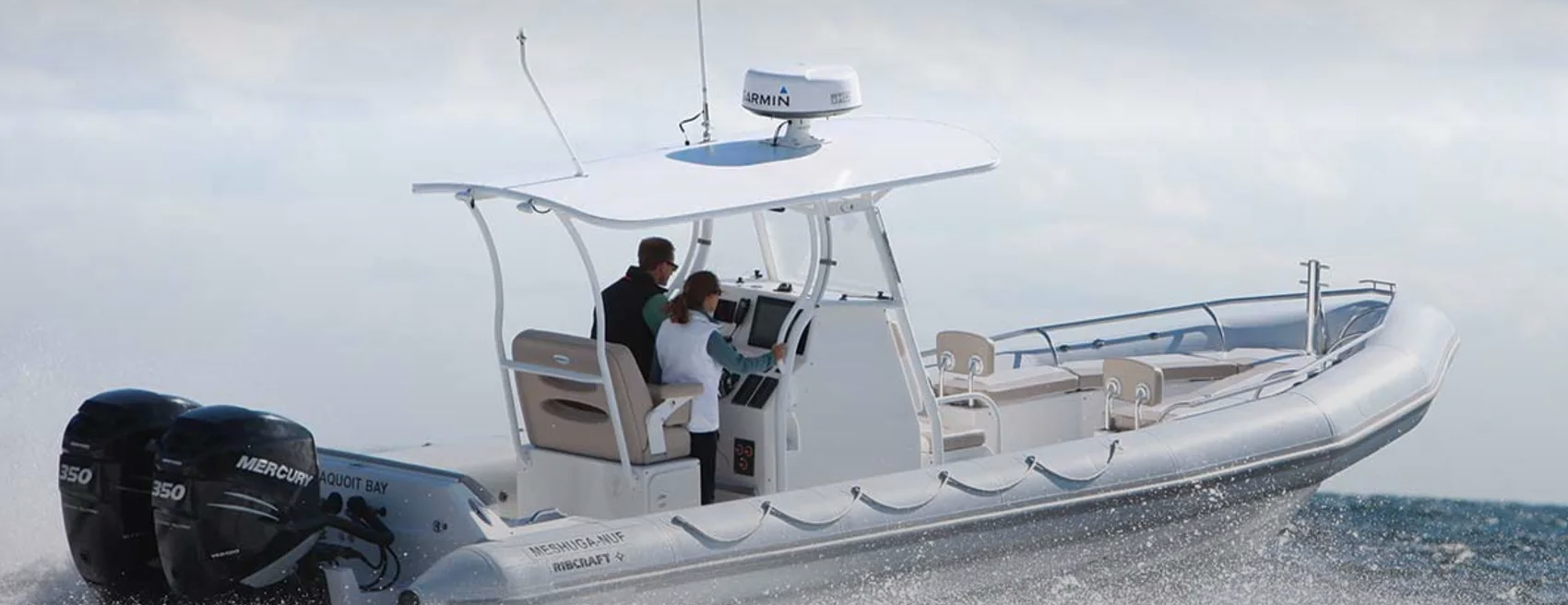
Running in Beam Seas
When the weather is abeam, our maneuvers and our journey in general are much easier. We can travel reasonably comfortably even in rough seas. Running against the waves would be impossible and riding in following seas would be difficult.
The secret of riding parallel to the waves is to travel at the highest possible speed permitted by the boat and our own abilities. The faster we go, the more we reduce the wetted surface area of the hull and the less spray we feel. When riding like this we can't follow a straight line. It's better to head into the wind and then head against it, maintaining small angles an avoiding the breaking waves. It's a mixed riding style, with the weather abeam sometimes and off the port or starboard quarter other times.
We trim the engines to suit each situation. That allows us to maintain a steady speed and the captain’s attention is limited to steering and adjusting the bow to the most suitable height. We must also make sure that we predict when the crest of each wave will break to avoid being trapped into the path of breaking waves. Turn the bow right or left depending on the course a few yards before each wave is ready to break and pass directly behind the break.
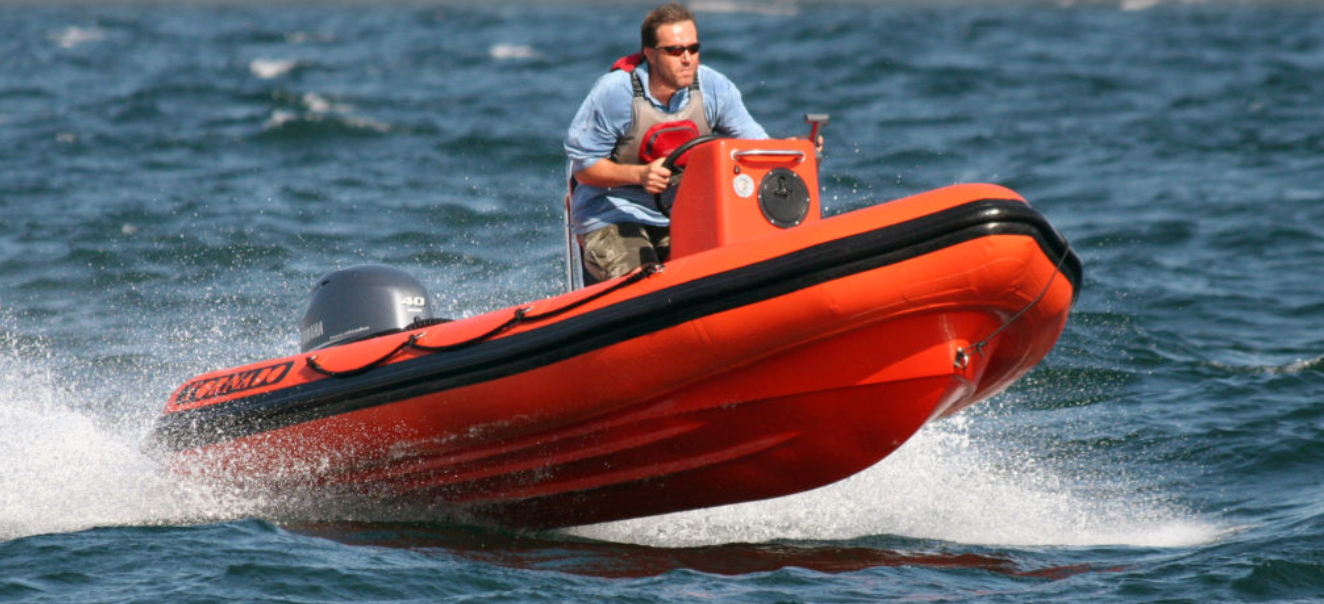
Conclusion
Before making any moves, it's vital to consider the weather, the boat's capabilities and our own skills. We must first carefully observe the wave direction, height and length, speed and timing. Then we decide on the suitable course heading to ensure a journey that's as painless and fast as possible. This should be done in relation to our course, but when the weather picks up, it's a good idea not to cruise in a straight line.
We may need to abandon our final destination and work out the most accessible route between the crest and troughs of the waves, adjusting our speed to suit the weather, the boat and our own experience.
We remain focused and try to look out for waves so we can calculate when and approximately where the crests will break or figure out the shape of unruly rollers so we can maneuver accordingly. All that needs to be done instantaneously and the faster we're going, the quicker we need to make calculations and execute maneuvers.
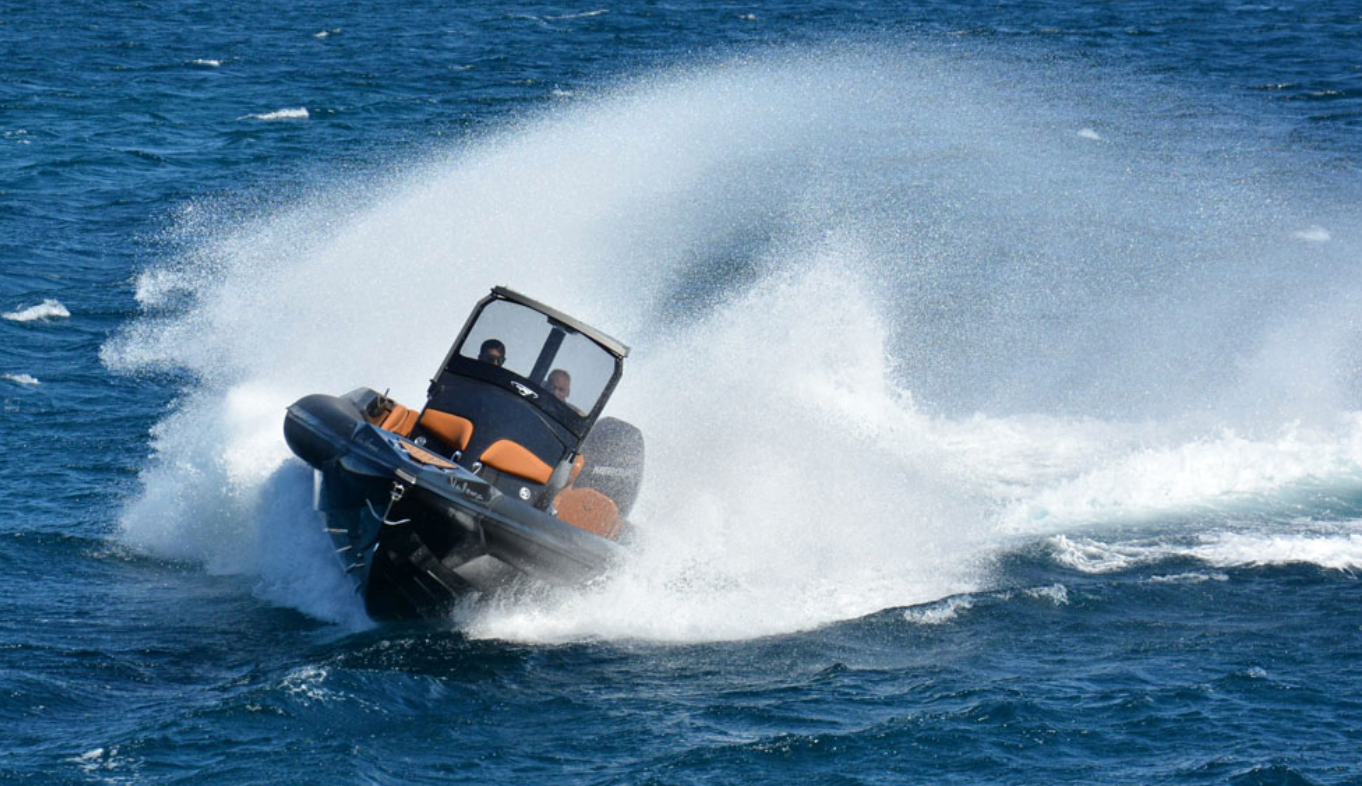
Speed and flexibility are two important weapons boats have for getting by in difficult seas.
Believe in yourself, head out to sea and spend time in your boat. Don't get easily disappointed and don't give up the first time things go wrong. No one was born an experienced skipper. You can’t learn without trying. You can learn by listening to those more experienced than you but there's nothing more educational than the sea itself. Only if you're out there can you understand how things work. You'll be put to the test and discover your own abilities and limits, so start off with small waves and gradually build up to more difficult conditions.